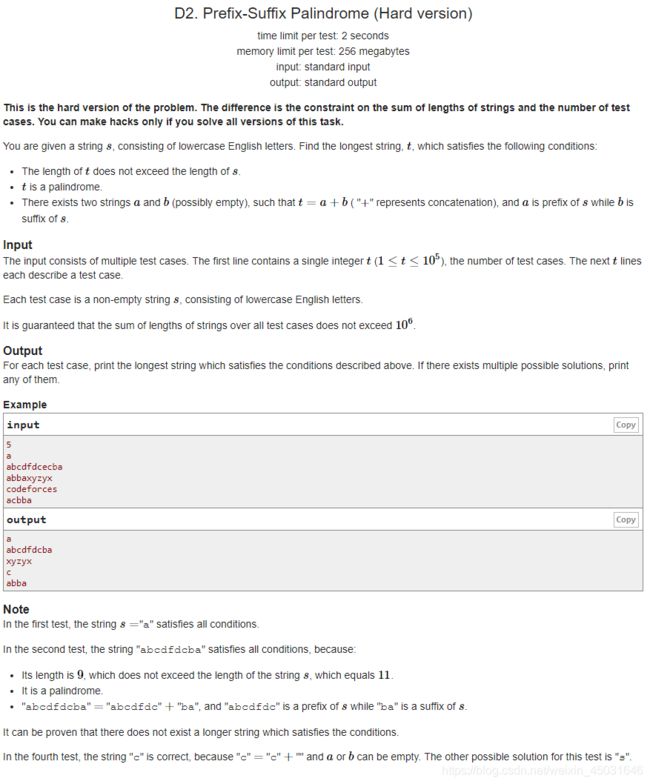codeforces D2. Prefix-Suffix Palindrome (Hard version)
题目
题意:
你有一个序列 s s s,还有一个序列 t t t, t t t的组成是有 s s s的前缀和后缀组成的,但是要保证 t t t最后是个回文串,前缀或者后缀可以为空字符串。
思路:
数据大了之后,主要的地方在于如何找到前缀和后缀中间的最长回文,一个回文也就是前缀=后缀,所以我们把前缀和后缀放到一起,变成一个新的字符串(中间要分隔开),然后也就是前缀要尽可能等于后缀,举个例子吧,假如从k开始的s要开始找到最长回文,那么新字符串是0开始的 S [ 0 ] . . . . S [ P ] S[0]....S[P] S[0]....S[P]是最长回文的话,那么新字符串中是不是有 S [ S . s i z e ( ) − 1 − P ] . . . . . S [ S . s i z e ( ) − 1 ] S[S.size() - 1 - P ].....S[S.size() - 1] S[S.size()−1−P].....S[S.size()−1]也是最长回文,是不是突然发现了什么?没错, K M P KMP KMP算法( k m p kmp kmp这里就不说了),然后写一个模板就能过了。
#include 